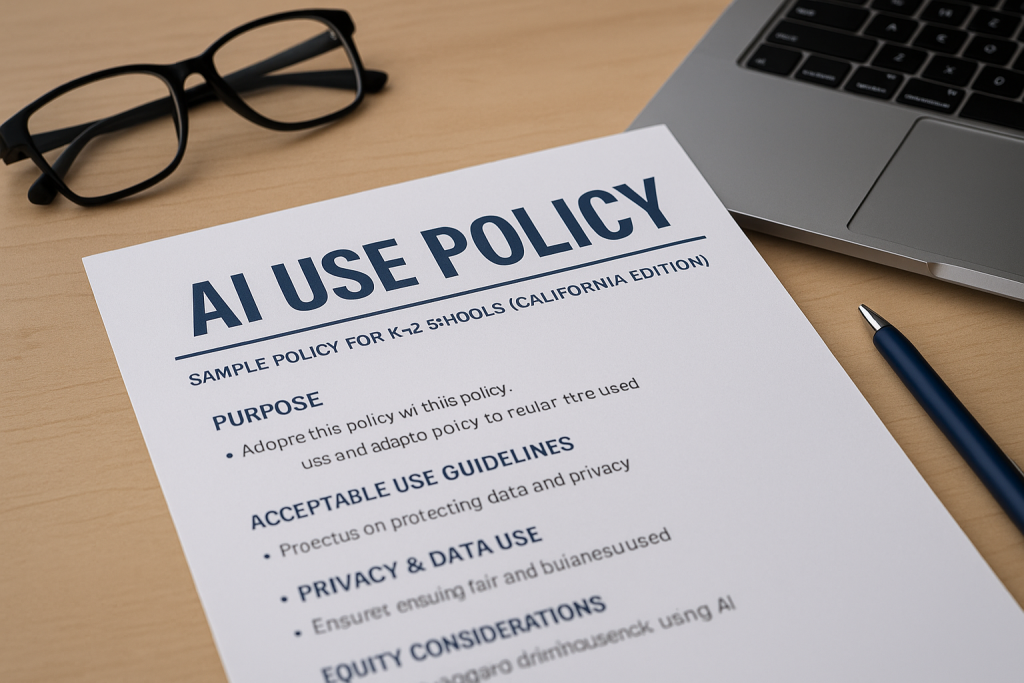
Artificial Intelligence (AI) is no longer just a buzzword — it’s in classrooms, teacher prep periods, and student screens right now. Whether it’s helping write emails, generating test questions, or sparking creative writing prompts, AI tools are here. And schools need guidance.
This guide provides a plain-language starting point for California school districts to build or revise AI use policies grounded in student safety, equity, and responsible innovation.
📌 Policy Purpose Statement
This policy exists to:
- Ensure AI tools used in schools align with district values
- Protect student data and instructional integrity
- Support staff and student use of AI in transparent, ethical ways
- Minimize risk while encouraging innovation
✅ Acceptable Use Guidelines
AI tools may be used when:
- Supporting lesson planning, rubric creation, or instructional design
- Enhancing student understanding through tutoring-like feedback (with oversight)
- Assisting with accessibility (e.g., summarization tools, speech-to-text)
Staff/students must disclose when AI-generated content is used in assignments or communications.
All AI tools used must be reviewed by IT and curriculum teams for alignment with district policy and compliance standards.
❌ Prohibited Uses
AI tools may not be used for:
- Generating or submitting AI-written work as original student output
- Deceiving, impersonating, or misleading others
- Accessing tools that store or transmit personally identifiable student data without district approval
🔒 Data Privacy and Compliance
Districts must:
- Review AI vendor terms for FERPA and AB 1584 compliance
- Avoid tools that use student data for model training or commercial gain
- Require signed data privacy agreements (DPAs) for any AI-integrated tools
⚖️ Equity and Access
To ensure responsible and fair use:
- Provide professional development on ethical AI use for educators
- Consider language access and digital divide issues when deploying AI tools
- Ensure policies don’t disadvantage students with less access to technology at home
💬 Instructional Use Examples
Teachers may use AI tools to:
- Draft lesson hooks or discussion prompts
- Build differentiated practice activities
- Summarize complex content for language learners
Students may use AI to:
- Brainstorm ideas or outlines (with disclosure)
- Generate study questions
- Improve grammar or clarity in drafts (with reflection on edits)
🔁 Review and Governance
- AI policies should be reviewed annually by a cross-functional team (IT, curriculum, legal)
- Designate a district AI coordinator or policy lead
- Update staff annually on approved tools and responsible use guidelines
🧭 Final Thought
AI isn’t the future — it’s already here. But schools get to decide how it shows up in classrooms.
With smart policies, clear communication, and a student-centered approach, AI can enhance learning without compromising privacy or equity.
Cybersecure California is here to help districts navigate this new frontier with confidence, clarity, and community-aligned values.
This page is your starting point. Adapt freely, revise often, and lead wisely.

